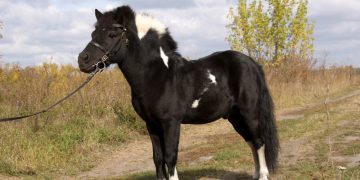Parrots are among the most fascinating and colorful creatures on the planet. Known for their intelligence, vibrant plumage, and ability to mimic human speech, these birds have captured the hearts of bird enthusiasts worldwide. If you’re curious about interesting facts about parrots, fun facts about a parrot, or parrots interesting facts, this comprehensive guide will take you on a journey through their natural habitats, behaviors, and unique characteristics. Whether you’re a bird lover or simply intrigued by these feathered wonders, this article will provide you with in-depth knowledge about parrot habitats and their incredible lives.
Parrot Habitats: Where Do Parrots Live?
Parrots are found in a variety of habitats across the globe, primarily in tropical and subtropical regions. Their natural environments play a crucial role in their behavior, diet, and survival. Here’s a breakdown of where parrots thrive:
1. Rainforests
- Rainforests are the most common habitats for parrots. These lush, dense forests provide an abundance of food, shelter, and nesting sites.
- Species like the Scarlet Macaw and Amazon Parrot are often found in the rainforests of Central and South America.
2. Savannas and Grasslands
- Some parrot species, such as the Australian Budgerigar, inhabit open savannas and grasslands. These areas offer a mix of trees for nesting and open spaces for foraging.
3. Coastal Regions
- Coastal areas and mangroves are home to parrots like the Eclectus Parrot. These habitats provide a unique ecosystem with access to both marine and terrestrial resources.
4. Mountainous Regions
- Certain parrot species, such as the Kea of New Zealand, live in high-altitude mountainous regions. These birds are adapted to colder climates and rugged terrain.
5. Islands
- Many parrot species are endemic to islands, such as the Kakapo in New Zealand and the Puerto Rican Parrot. Island habitats often have fewer predators, allowing parrots to thrive.
Interesting Facts About Parrots: What Makes Them Unique?
Parrots are not just beautiful; they are also incredibly intelligent and adaptive. Here are some fun facts about a parrot that highlight their uniqueness:
1. Mimicry and Communication
- Parrots are renowned for their ability to mimic human speech and sounds. African Grey Parrots, in particular, are considered one of the most intelligent bird species, capable of learning hundreds of words and phrases.
- In the wild, parrots use vocalizations to communicate with their flock, establish territory, and warn of predators.
2. Diet and Foraging
- Parrots have a varied diet that includes fruits, nuts, seeds, flowers, and even insects. Their strong, curved beaks are perfectly adapted for cracking open nuts and seeds.
- Some parrots, like the Kea, are known to be opportunistic feeders and have been observed eating carrion or even attacking sheep.
3. Social Behavior
- Parrots are highly social birds that live in flocks. These flocks provide safety in numbers and help them find food more efficiently.
- Many parrot species form strong pair bonds and mate for life, sharing responsibilities like nesting and raising chicks.
4. Lifespan
- Parrots are among the longest-living birds. Larger species, such as Macaws and Cockatoos, can live for 50 to 80 years or more in captivity with proper care.
5. Colorful Plumage
- The vibrant colors of parrots serve multiple purposes, including attracting mates and camouflaging in their natural habitats. For example, the bright green feathers of many parrots help them blend into the foliage of rainforests.
Fun Facts About a Parrot: Lesser-Known Tidbits
Here are some lesser-known but equally fascinating parrots interesting facts:
1. Feet Designed for Climbing
- Parrots have zygodactyl feet, meaning they have two toes facing forward and two facing backward. This unique foot structure allows them to grip branches, climb, and manipulate objects with ease.
2. Tool Use
- Some parrot species, like the Goffin’s Cockatoo, have been observed using tools in the wild. They can fashion sticks to retrieve food or solve puzzles, showcasing their problem-solving abilities.
3. Playful Nature
- Parrots are highly playful and curious birds. They enjoy toys, puzzles, and interactive games, which help keep them mentally stimulated.
4. Cultural Significance
- Parrots have been symbols of beauty, intelligence, and communication in various cultures. They are often featured in art, literature, and mythology.
Parrots in the Wild vs. Captivity
While parrots are popular pets, it’s important to understand their needs and the challenges they face in captivity:
1. Wild Parrots
- In the wild, parrots have access to vast territories, diverse diets, and social interactions with their flock. These factors contribute to their physical and mental well-being.
2. Captive Parrots
- Parrots in captivity require a stimulating environment, a balanced diet, and regular social interaction to thrive. Without proper care, they can develop behavioral issues like feather plucking or aggression.
3. Conservation Efforts
- Many parrot species are threatened by habitat loss, illegal pet trade, and climate change. Conservation programs aim to protect their natural habitats and promote breeding in the wild.
How to Support Parrot Conservation
If you’re passionate about parrots, here are some ways you can contribute to their conservation:
- Adopt, Don’t Shop: Consider adopting a parrot from a rescue organization instead of purchasing one from a breeder or pet store.
- Support Conservation Organizations: Donate to or volunteer with organizations dedicated to protecting parrot habitats and species.
- Raise Awareness: Educate others about the importance of preserving parrot habitats and the challenges these birds face.
Final Thoughts
Parrots are truly remarkable creatures with their vibrant colors, intelligence, and social nature. From their diverse habitats to their unique behaviors, there’s no shortage of interesting facts about parrots to discover. Whether you’re fascinated by their mimicry skills, playful personalities, or ecological significance, parrots continue to captivate and inspire.
By learning more about these incredible birds and supporting conservation efforts, we can help ensure that parrots thrive in their natural habitats for generations to come. So, the next time you encounter a parrot, take a moment to appreciate the fun facts about a parrot and the wonders of the avian world!

























